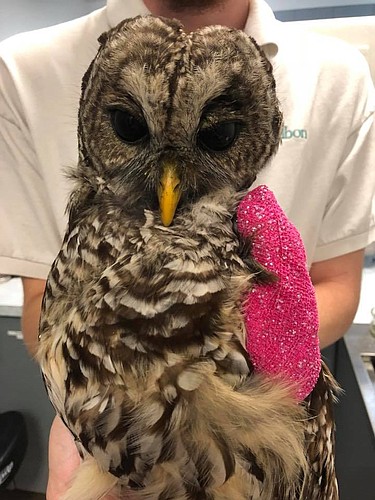- April 27, 2024
-
-
Loading

Loading

After more than seven months, Maitland’s Audubon Center for Birds of Prey celebrated Sept. 28 with the release of an eaglet back into the wild.
The rehabilitation began in 2016, after rescuers discovered the eaglet struggling atop a 75-foot-tall cypress tree. A multi-hook fishing lure had gotten stuck between its beak and leg.
“There was a fracture,” Rehabilitation Supervisor Dianna Flynt said. “So we got the fracture stabilized, and it was a long rehab process, and (we) got him back in condition where we could actually release him.”
This latest success story is just one of many the center has helped write in its long history. The center is a part of the National Audubon Society, a non-profit environmental organization that is dedicated to the conservation of birds.
Although it was founded in 1979, Audubon’s roots in Maitland date back to 1900, where the first meeting took place at Dommerich Estates — making Maitland the founding city in Florida.
Since 1979, the center has helped rescue, medically treat and rehabilitate tens-of-thousands of Florida’s raptors before placing them back into their homes.
So far this year, the center already has admitted more than 750 raptors, with an estimation of helping to care for at least 850 by the end of the year. That number includes eagles, owls, ospreys, kites and vultures.
Like any kind of medical treatment and rehabilitation, the length it takes for each animal varies — from a few days to indefinite, Flynt said.
The process is also developed to each bird’s specific needs — with the goal to get each medically treated and repaired, before getting the birds reconditioned and placed back into the wild.
Although many times the birds are able to make their way back home, some never see the wild again because of their injuries.
“Those that we can’t release, we try to find homes for at zoological parks all over the country and/or give them a home here at our facility,” Flynt said. “Those are the birds that become educational tools at our facility, so we can educate the public about raptors and environmental things they can do in their own backyards that are conservation-oriented.”